Search
Did you mean: Quran?
Remove Ads
Advertisement
Summary 
Loading AI-generated summary based on World History Encyclopedia articles ...
Search Results
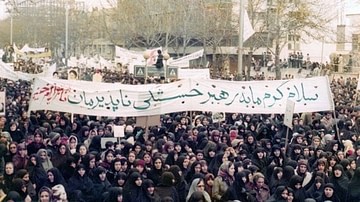
Definition
Iranian Revolution
The Iranian Revolution (1978-1979) was the social movement that arose from widespread and diverse discontent with the monarchic government of Iran. The revolution was fought against the regime of Mohammad Reza Shah (r. 1941-1979), and it...

Video
Iran Chogha Zanbil Ziggurat
Chogha-Zanbil Ziggurat زيگورات چغازنبيل is a pyramidal structure located in an immense plateau near the city of Shush in Khuzestan Province in southwestern Iran. It’s an ancient temple which was once one of the most sacred sites for the...
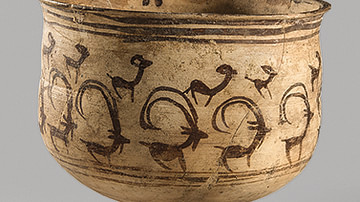
Image
Terracotta Goblet with Gazelles and Ibexes from Shahr-e Sukhteh, Iran
Terracotta goblet with gazelles and ibexes, found in grave no. 725 in Shahr-e Sukhteh, southern Iran, Early Bronze Age, c. 2800-2400 BCE. National Museum of Iran, Tehran, acc. no. 12947. Photo by Nima Fakoorzadeh (Baloot Noghrei) Shahr-e...
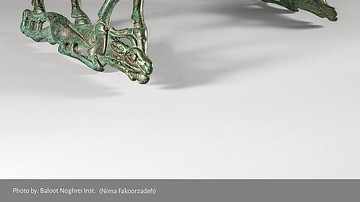
Image
Bronze Horse Bit with Winged Goats from Western Iran
Luristan Bronze artefact from Iron Age II or III, c. 950-650 BCE. National Museum of Iran, Tehran. Acc. no. 3915, Photograph by Nima Fakourzadeh (Baloot Noghrei) In archaeology, the cast objects with bronze decorations obtained from the...

Video
Iran - Persian Architecture At its Best
Persian architecture has always been a source of pride for Iranians, attracting tourists from around the world to its unique features and remarkable achievements.
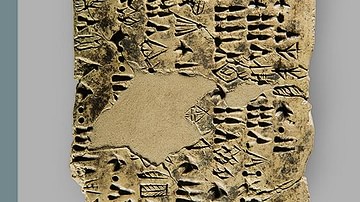
Image
Early Elamite Clay Tablet with Numerical Signs from Southern Iran
Early Elamite clay tablet with numerical signs found in Tappeh Yahya, Kerman, dating to c. 3100 to 2900 BCE (Yahya Period IVc). National Museum of Iran, Tehran, inv. no. 4065. Photo by Nima Fakoorzadeh (Baloot Noghrei) Tappeh Yahya in...
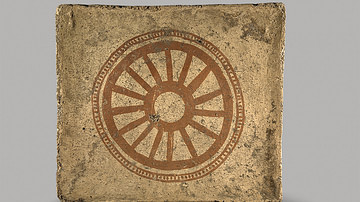
Image
Painted Mural Tile with Wheel from Western Iran
Painted brick from Baba Jan, Luristan, Iron Age III, c. 850 to 550 BCE. National Museum of Iran, inv. no. 6735 This terracotta tile with a painted wheel is one of the c. 200 mural bricks that once decorated the “ceremonial rooms” of the...
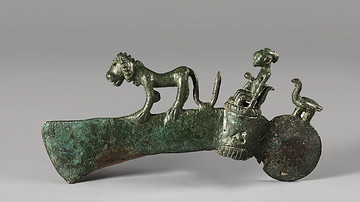
Image
Bronze Axe Head Topped with a Man Ruling Animals from Western Iran
Bronze axe head topped with a man ruling animals, found in Saqqiz, Luristan, from Iron Age II (c. 1100-900 BCE). National Museum of Iran, Tehran. cc. no. 1434, photo by Neda Tehrani (Baloot Noghrei). Following the collapse of civilizations...
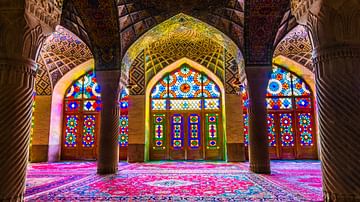
Image
Nasir al-Mulk Mosque, Iran
An interior view of the Nasir al-Mulk (Nasir-ol-Molk) Mosque, also known as the Pink Mosque, in Shiraz (Iran). The mosque was constructed between 1876 CE and 1888 CE, during the Qajar dynasty.
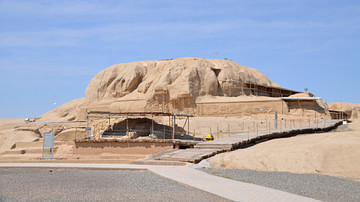
Image
Tepe Sialk, Iran
Tepe Sialk is an archeological site (a tepe, "hill, tell") near Kashan in central Iran consisting of two hills with six main phases of occupation. The oldest settlements in Sialk date to around 6000–5500 BCE while the ziggurat was constructed...